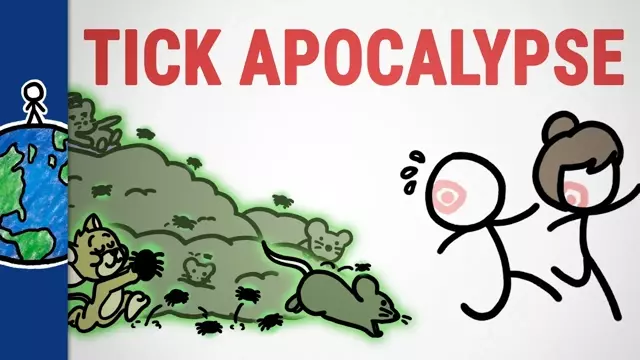2019-04-22
[public] 340K views, 11.1K likes, dislikes audio only
Thanks to the University of Minnesota for sponsoring this video! https://twin-cities.umn.edu/
Lyme disease is spreading like wildfire around the world: here's why.
Thanks also to our Patreon patrons https://www.patreon.com/MinuteEarth and our YouTube members.
___________________________________________
If you liked this week’s video, you might also like: https://www.cdc.gov/lyme/index.html
_________________________________________
Subscribe to MinuteEarth on YouTube: http://goo.gl/EpIDGd
Support us on Patreon: https://goo.gl/ZVgLQZ
And visit our website: https://www.minuteearth.com/
Say hello on Facebook: http://goo.gl/FpAvo6
And Twitter: http://goo.gl/Y1aWVC
And download our videos on itunes: https://goo.gl/sfwS6n
___________________________________________
Credits (and Twitter handles):
Script Writer: Peter Reich
Script Editor: David Goldenberg (@dgoldenberg)
Video Illustrator: Arcadi Garcia Rius (@garirius)
Video Directors: David Goldenberg & Julián Gómez (@thejuliangomez)
Video Narrator: Alex Reich (@alexhreich)
With Contributions From: Henry Reich, Kate Yoshida, Ever Salazar
Music by: Nathaniel Schroeder: http://www.soundcloud.com/drschroeder
___________________________________________
References:
Brunner, J. L., LoGiudice, K., & Ostfeld, R. S. 2008. Estimating reservoir competence of Borrelia burgdorferi hosts: prevalence and infectivity, sensitivity, and specificity. Journal of medical entomology, 45(1), 139-147. http://bit.ly/2ZmxIDP
Keesing, F., et al. 2009. Hosts as ecological traps for the vector of Lyme disease. Proceedings of the Royal Society of London B: Bological Sciences, 276(1675), 3911-3919. https://royalsocietypublishing.org/doi/pdf/10.1098/rspb.2009.1159
Kilpatrick, A. M. et al. 2017 Lyme disease ecology in a changing world: consensus, uncertainty and critical gaps for improving control. Phil. Trans. R. Soc. B 372: 20160117. http://dx.doi.org/10.1098/rstb.2016.0117
Magnaval, J. F., et al. 2016. A serological survey about zoonoses in the verkhoyansk area, northeastern siberia (sakha republic, Russian federation). Vector-Borne and Zoonotic Diseases, 16(2), 103-109. https://doi.org/10.1089/vbz.2015.1828
Ostfeld, R. S., et al. 2014. Life history and demographic drivers of reservoir competence for three tick-borne zoonotic pathogens. PLoS ONE. https://doi.org/10.1371/journal.pone.0107387.
Ostfeld, R. S., Levi, T. , Keesing, F. , Oggenfuss, K. and Canham, C. D. (2018), Tick‐borne disease risk in a forest food web. Ecology, 99: 1562-1573. doi:10.1002/ecy.2386
Robinson, S. J., et al. 2015. Disease risk in a dynamic environment: the spread of tick-borne pathogens in Minnesota, USA. EcoHealth, 12(1), 152-163. https://dx.doi.org/10.1007%2Fs10393-014-0979-y
Scott, J. D. et al. 2017. Lyme disease Bacterium, Borrelia burgdorferi sensu lato, detected in multiple tick species at Kenora, Ontario, Canada. J. Bact. Parasitol, 8. http://bit.ly/2ZjOXWd
Vandenesch, A., et al. 2014. Incidence and hospitalisation rates of Lyme borreliosis, France, 2004 to 2012. Eurosurveillance, 19(34), 20883. http://bit.ly/2Dn693Q
Wu, X. B., et al. 2013. Distribution of tick-borne diseases in China. Parasites & Vectors, 6(1), 119. https://doi.org/10.1186/1756-3305-6-119
/youtube/video/EQ748TZcuqs
/youtube/video/cvKyxrOvgZk?t=12.99
/youtube/channel/UCeiYXex_fwgYDonaTcSIk6w
/youtube/video/4DF94Wvtekk
https://patreon.com/minuteearth

